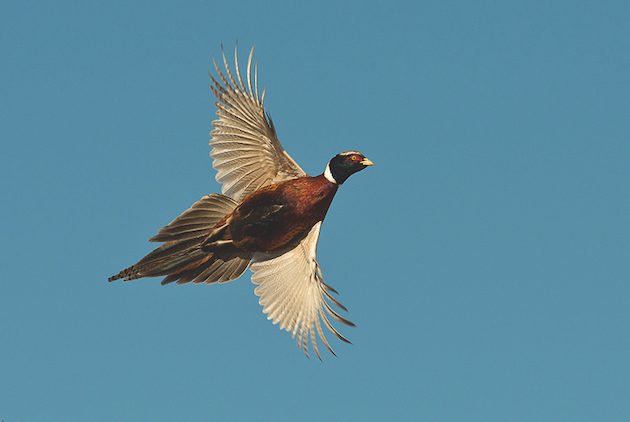Why I’m becoming increasingly confident about the next shooting season
There’s no doubt that the pandemic has taken its toll on shooting, but there are reasons to look to the future with some degree of optimism, says Liam Bell

Pheasant
I have been trying to get a handle on chick and poult prices for the next shooting season. Rather unsurprisingly, I am struggling to get any consensus from the keepers who rear a few to sell on and the keepers and shoots who only buy in for themselves.
Game farmers are also keeping their cards close to their chests at the moment, no doubt waiting to see how things pan out regarding hens and orders.
Personally, I am becoming more confident that we will be shooting this coming season.
What will the next shooting season hold?
If we work on the basis that we managed half a season over the past year, we will probably be OK, given the added security of the COVID-19 vaccination programmes. This is accepting, of course, that it will still be a different sort of season to the ones we have been used to and that we will still, to a degree, be following the rules on mixing and social gathering limits.
Opinion on pricing seems to be split into two camps at the moment. There are those who think both chicks and poults will be cheaper this year because the game farms will have more hens penned than normal and therefore surplus chicks. Then there are those who think poults will go up in price because of the rise in associated costs, regardless of the availability and price of chicks.
Chick costs are somewhere between 15% and 20% of the cost of a poult. If chick prices fall because people have more hens, I doubt it will affect the overall costs of a poult if gas, feed, wages and transport costs have all gone up.
Similarly, a cheap hen bird won’t necessarily reduce the price of a chick a great deal if breeder pellets are up £35 to £40 a tonne.

There will be more birds on the ground this spring after the loss of shoot days due to COVID-19
Low prices
Some keepers I have spoken to have found homes for their hens, but others are struggling or have decided against catching-up as the prices being offered for hens are so low. The reasons for game farms not wanting any more hens, or paying very little, are pretty much the same up and down the country.
A lot of game farms overwinter their hens and those that don’t will have regular suppliers who will probably have a few more birds than normal to catch-up this year, given the shortened season.
There will undoubtedly be more birds left on the ground this spring, but I think we need to be realistic about how many.
Of course, that will only be the case where shoots had planned to go ahead as normal and weren’t able to.
Quite a few didn’t release any birds at all because of the worries and uncertainties associated with COVID-19 last spring, while a lot of others scaled back and released fewer for the same reason.
So how many birds will be left? If the shoots that went ahead normally shoot between 30% and 35% of what they release in an average year and they managed to shoot a few days in October, lost November, but caught up a bit by increasing bags on syndicate days and shoehorning in some of their cancelled November days in between those they already had booked in for December, we are really only looking at the birds that would been shot in January.
How can shoots keep their birds safe from predators?
It would be a mistake to think that shoots that don’t hatch and rear their own birds have nothing to…
How to look after birds left at the season’s end
Regardless of the number of birds you shot on your last day, it is probable that you saw or flushed three or…
Staying positive
The 35% return, if it is split between the four months, works out at somewhere between 8% and 9% a month. Miss out January, which is by far the quietest month, allow for increased bags and the extra slotted-in days in December, and we are probably looking at returns being down by between a quarter and a third.
In itself, that isn’t huge, given that there is usually upwards of 10% of a shoot’s initial release number left on the ground post-shooting season anyway.
There are two plus sides to having a few more hens about this spring. The first is that many UK shoots will decide to support their local game farms more, relying less on imported eggs and chicks. The second is that, as we have finished shooting a month early, there will be more time for feeding — for the duration of the hungry gap — and to spend on predation control. A win for lots of species, not only game.










